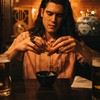This article originally appeared on VICE Italy.Twenty years ago, your first tentative sip of an ice-cold Bacardi Breezer – procured by a kindly stranger outside a regional Spar, or stolen during your older sister’s 17th birthday party – was a teenage rite of passage. My experience with the drink began in year seven, with an orange Bacardi Breezer. I was hanging out with older kids and felt incredibly, inconceivably cool. I was holding a bottle containing alcohol. It was only 4 percent, and it tasted like Fanta, but it was mine, and it was booze. Reminiscing about the drink with people my age, their `Breezer memories largely echo mine.
Advertisement
What made the Bacardi Breezer so special? Many of us had tasted alcohol before, maybe a sip of wine or beer, given to us by parents at weddings and Christmas. But the Breezer represented something different, first contact with the forbidden fruit: hard liquor, a drink reserved for your parents and those sixth-formers who’d skip class to drink Malibu and smoke Richmonds in the skatepark.The Breezer’s success wasn’t an accident, but the result of a careful and incredibly successful strategy concocted by Bacardi. Launched in the US in 1990, the colourful drink was very much product of its time, with cocktail trends in the 90s focused on the sweet and syrupy. Within a year of its launch, Bacardi sold over 4 million cases of the rum-based cocktail in the US. It landed on European shores a few years later, hitting the UK in 1993, before making it to Italian shelves in 2001. It was also a huge hit in India, Israel, Canada and Australia, with the alcoholic percentage and recipe varying slightly from country to country.My home country of Italy was a little late to the pre-mixed drink game. Back in the 90s, we only really had two examples: Campari Soda – made with the iconic Italian aperitivo and launched in 1932 – and the Bellini, a champagne-based drink stocked in supermarkets from 1988.For us Italians, the Breezer totally revolutionised the market. Other brands swiftly jumped on the bandwagon: Campari Mixx, Eristoff Ice, Smirnoff Ice (another Bacardi-owned brand) and the Havana Club Loco all followed. In 2002, 45 million bottles of ready-to-drink cocktails were sold in Italy alone. Despite the competition, Bacardi’s five fruity flavours conquered the hearts of young drinkers. The Breezer was king.
Advertisement
Bacardi’s winning strategy relied heavily on marketing, convincing kids and young adults to buy into the brand’s party image. With the slogan “Free spirit in everyone” (and sometimes “Latin spirit in everyone”), Breezer ads juxtaposed dull, responsibility-laden adult life with the fun and breezy spirit of young party kids. According to the book Principles of Marketing by Frances Brassington and Stefan Pettitt, Bacardi was one of the first brands to tailor ads to different platforms, including online (ahead of the curve for the 1990s), radio, SMS and TV. Although their customer base was 18 to 30-year-olds, the message hit home with much younger audiences, too.Of course, these days pre-mixed drinks are everywhere. And the pandemic has only boosted the market, with companies like NIO in Italy (now available also in the UK) or Sprezza in the US blowing up, and the canned cocktail market a new player in the pre-mix game.Ultimately, the Breezer’s success peaked two decades ago. In Italy, sales slowed from 2004 and plummeted in 2011. Today, its a niche product – a nostalgic relic of the early-2000s, like flip phones or butterfly clips. In the UK, the traditional Bacardi Breezer was discontinued in 2015, while a new generation of Breezers was launched in 2019 featuring grown-up flavour combinations like lemon and elderflower. I recently tried the old lime version again, and it was gross. That blast from the past was just a little too sweet.

